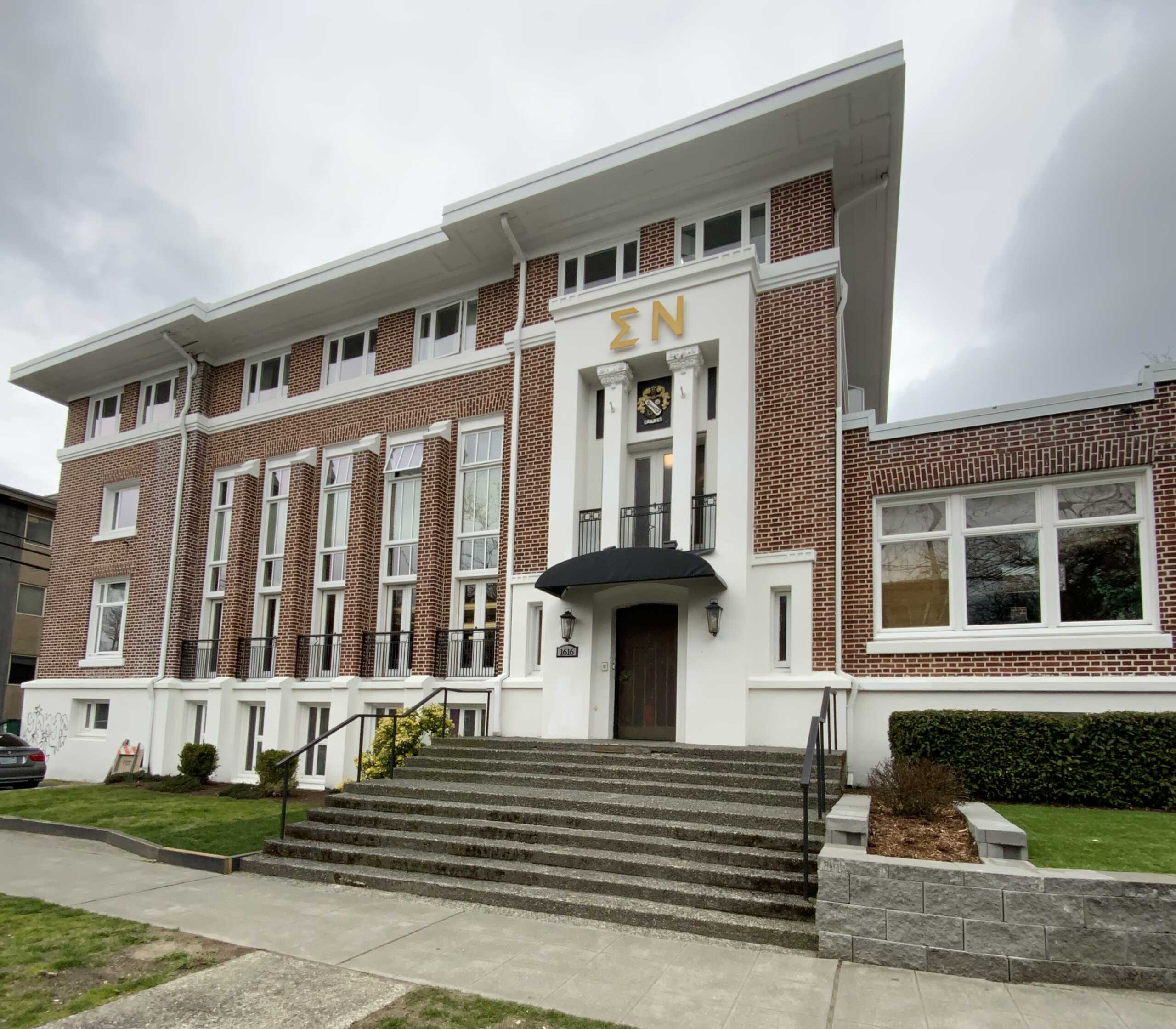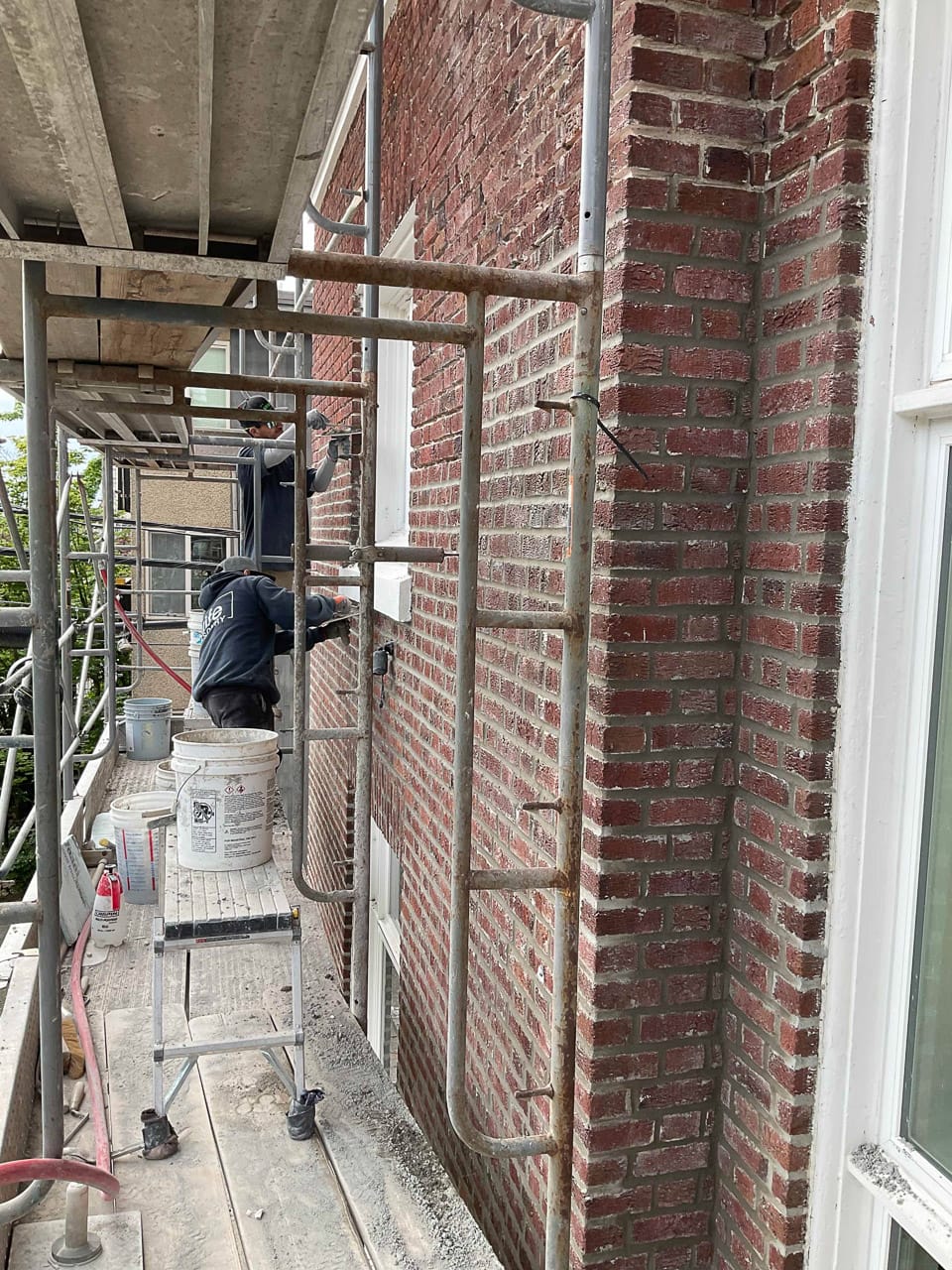If you’ve ever walked past The Smith Tower, Old Rainier Brewery, or King Street Station, you know that these historic brick structures enrich our City’s character. But what happens when these iconic landmarks start to crack, sag, or crumble?
Think about it: The church you attend – maybe the First United Methodist Church in downtown Seattle, was built over 100 years ago. It has so much character with its historic architecture and wood beams, but it’s starting to show its age, needing repairs more often. You don’t want it torn down and replaced with some modern building, so what’s the solution? How do you preserve its history while making sure it doesn’t become too dilapidated?
Therein lies the problem we face a lot here at Rife Masonry. As a masonry contractor, we specialize in restoring historic brick buildings throughout Seattle, from temples and churches to schools and landmark homes. With each historic building restoration comes unique sets of challenges – it’s not as easy as replacing a fallen brick here and there.
So, what are the exact challenges we face when we restore historic buildings across Seattle? Here’s a look at the unique hurdles we consistently encounter:

1. Maintaining Structural Integrity
The first challenge in restoring historic buildings is what we’re brought in to do: restore their structural integrity and implement modern features to bring them up to current code.Many historic buildings don’t meet today’s safety standards because they were constructed in a different era, with different building techniques, priorities, and technology. At the time, construction methods were based on what was available and practical for the period, and the pace of life and safety concerns were not as advanced as they are now.
For example, many historic buildings use timber or stone for load-bearing walls, which, while sturdy in their day, can’t always support the weight of modern equipment, furniture, or the increased number of people in the space.
Additionally, older buildings, like Seattle’s historic Pioneer Square, were built without the knowledge we have now about things like seismic activity, wind resistance, or fire safety. This means that their foundations, walls, and frames may not provide the necessary support to withstand these risks, which modern codes require to ensure safety. Modern construction practices use reinforced steel, advanced concrete mixtures, and improved framing techniques that are better suited for today’s safety standards and load-bearing needs.In addition to the foundational repairs, there are many building elements that need to be added to bring the structure up to code, such as sprinklers, accessibility improvements, updated electrical systems, proper ventilation, and much more.
But here’s the challenge-how do you implement these without compromising the soul of the building? Too much modernization can strip away the charm and uniqueness that make these structures historically significant. We’ll get into that in the next section.
2. Maintaining Historical Authenticity
For many historical buildings, their character and historical charm lie in the original texture of bricks, the intricate masonry details, or other decorative elements that are no longer commonplace in today’s construction practices. Whereas, modern construction focuses on efficiency and standardization, often using materials like drywall, pre-fabricated components, and uniform finishes – nothing super intricate. But with such a wide gap between the materials and styles – how do we update the historic buildings without watering away at their beautiful, intricate design?
For example, if a pre-20th century brick façade has cracks or weathering, it’s tempting to replace it with modern bricks. But doing so could erase decades of history.
That is probably the single biggest challenge of restoring historic brick buildings. Striking a balance between preserving the historical authenticity of the building while also making sure it is safe.
At Rife Masonry, we pride ourselves on doing our best to excel in this area by utilizing key techniques such as:
💡Repointing, Not Replacing
Instead of replacing ornate bricks, repoint the mortar to restore stability & durability while preserving the historic look.
💡Use of Matching Materials
If replacement is necessary, we use bricks or stone that match the original in color, texture, and pattern.
💡Restoring Original Features
Restore original features like masonry or cornices when possible, and carefully reconstruct damaged parts to match the original design.
3. Navigating Regulatory Hurdles
Renovating historic buildings often requires navigating complex regulatory processes and addressing the concerns of various stakeholders. This is because many historic properties are protected by local preservation boards or government agencies, meaning that any updates-no matter how minor-must meet stringent standards before being approved.
For example, many older buildings in areas like Pioneer Square or the International District are protected by Seattle’s Historic Preservation Program. This means any renovation or repair work must go through a thorough review process by the Seattle Landmarks Preservation Board or other local agencies before receiving approval.
Other boards that play a role include The Washington State Department of Archaeology and Historic Preservation (DAHP), The Seattle Design Commission, and The Department of Neighborhoods (DON).
4. Uncovering Unforeseen Issues
Given their age (obviously), historic buildings are likely to have more structural issues than a new build or even something built 40 years ago. But more often than not, the issues go deeper than one even initially thought. A lot of times what happens is once the restoration process begins, underlying problems are discovered that weren’t accounted for in the initial plans.
For instance, sometimes, we uncover hazardous materials like lead paint or asbestos or realize that deeper structural issues exist. These unforeseen discoveries can drive up costs and lengthen timelines.

Ensuring the Future of Historic Brick Buildings in Seattle
While these challenges certainly make restoring historic buildings more difficult than just a simple fix on a brick home or repair of a crumbled archway, they are some of the most rewarding projects we do. We are proud to play a small part in our city’s history, ensuring that these important historic buildings stay standing for people to enjoy them for years to come. We go the extra mile to ensure that history is preserved, intricate masonry is maintained, and the building’s legacy lives on.
Have a historic building that needs restoration? Speak with the experts at Rife Masonry. Our union-trained team is certified in Historic Masonry Preservation by the International Masonry Institute and is ready to tackle the job. Contact us today for a consultation!


